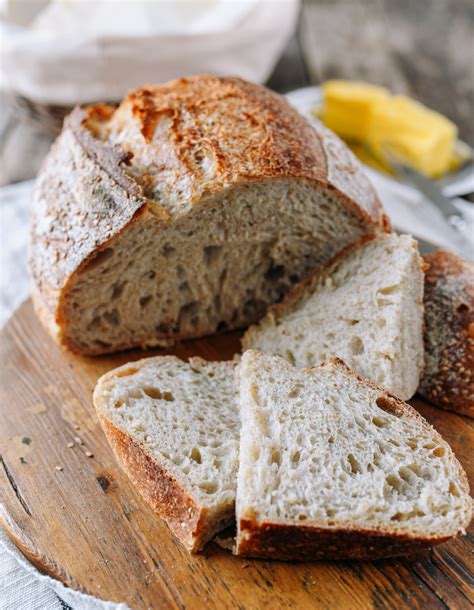Sourdough Bread Recipes: A Beginner's Guide to Homemade Goodness
Are you ready to embark on a delicious journey into the world of sourdough bread? This comprehensive guide provides you with everything you need to know, from creating your starter to baking the perfect loaf. Whether you're a seasoned baker or a complete novice, these sourdough bread recipes cater to all skill levels. Let's get started!
What is Sourdough Bread?
Sourdough bread is a type of bread that's leavened using a sourdough starter – a natural culture of wild yeasts and bacteria. This gives the bread its characteristic tangy flavor and unique texture. Unlike commercial yeast, the starter ferments slowly, leading to a more complex flavor profile and a longer shelf life.
Creating Your Sourdough Starter: The Foundation of Flavor
Before diving into sourdough bread recipes, you'll need a vibrant and active sourdough starter. This process takes time and patience, but the rewards are well worth the wait!
Step-by-Step Starter Creation:
- Combine: Mix equal parts unbleached all-purpose flour and filtered water in a clean jar. Stir until a smooth, pancake-like consistency is achieved.
- Ferment: Cover the jar loosely and let it sit at room temperature for 24-48 hours. You'll notice bubbles forming – this is a good sign!
- Feed: After the initial fermentation, discard about half of the starter and feed it with fresh flour and water (again, equal parts). Repeat this feeding process daily for about a week, or until the starter doubles in size consistently after each feeding. Your starter is ready when it floats in water.
Sourdough Bread Recipe: A Simple, Classic Loaf
This recipe is perfect for beginners and delivers a wonderfully rustic loaf.
Ingredients:
- 500g strong bread flour
- 350g active sourdough starter (fed 4-6 hours prior)
- 300g water
- 10g salt
Instructions:
- Autolyse: Combine flour and water in a large bowl. Mix gently and let rest for 30-60 minutes. This allows the flour to fully hydrate.
- Mix: Add the starter and salt to the autolysed dough. Mix thoroughly until all ingredients are well combined.
- Bulk Fermentation: Cover the bowl and let the dough rise at room temperature for 4-6 hours, or until it has nearly doubled in size. Perform a few sets of stretch and folds during this time.
- Shape: Gently turn the dough out onto a lightly floured surface. Shape it into a round or oval loaf.
- Proof: Place the shaped dough in a well-floured banneton basket (or a bowl lined with a floured linen cloth) and cover. Let it proof in the refrigerator for 12-18 hours.
- Bake: Preheat your oven to 450°F (232°C) with a Dutch oven inside. Carefully remove the hot Dutch oven from the oven. Score the dough and place it inside the Dutch oven. Bake with the lid on for 20 minutes, then remove the lid and bake for another 25-30 minutes, or until deeply golden brown.
- Cool: Let the bread cool completely on a wire rack before slicing and enjoying.
Tips for Sourdough Success
- Patience is key: Sourdough baking requires time. Don't rush the process.
- Room temperature: Maintain a consistent room temperature for optimal fermentation.
- Hydration: The hydration level of your dough can affect the final texture.
- Flour: Use high-quality bread flour for the best results.
- Experiment: Don't be afraid to experiment with different flours, add-ins, and shaping techniques.
Beyond the Basics: Exploring Different Sourdough Recipes
Once you’ve mastered the basic sourdough recipe, explore variations like:
- Whole Wheat Sourdough: Incorporate whole wheat flour for added nuttiness and fiber.
- Rye Sourdough: Use rye flour for a distinctive, tangy flavor.
- Sourdough with Seeds: Add seeds like sunflower, pumpkin, or flax for extra texture and nutrition.
Happy baking! Enjoy the rewarding process and the delicious results of your homemade sourdough bread.
